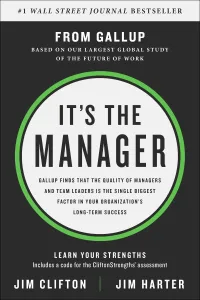How to Combat Quiet Quitting, Presenteeism, and Disengagement
In This Issue
- Quiet Quitting, Presenteeism, Or Disengagement?
- Combat the Disengagement Crisis and Build High Performing Teams
- Teach Managers To Successfully Engage, Motivate, And Develop Their People.

Quiet Quitting, Presenteeism, Or Disengagement?
Quiet quitting refers to generally doing the minimum requirements of one’s job and putting in no more time, effort, or enthusiasm than necessary. As such, it is something of a misnomer since the worker doesn’t actually leave their position and continues to be paid.
Driven largely by social media, quiet quitting emerged as a much-publicized trend. More recently, a 2022 Gallup survey suggested that at least half of the U.S. workforce consists of quiet quitters. The reaction of managers to the phenomenon has been mixed. Some have been tolerant, in part because the tight labor market has made replacing quiet quitters more difficult.
I recall more than a decade ago presenteeism became a very common phenomenon with employees showing up even when they are not well. Is quiet quitting just a new label on an old problem?
In a September 2022 article, Jim Harter, Gallop’s Chief Scientist – Workplace, reported that at least half of the U.S. workforce is quiet quitting and managers are essential to combatting this trend.
Many quiet quitters fit Gallup's definition of being "not engaged" at work -- people who do the minimum required and are psychologically detached from their job. Everyone else is either engaged (32%) or actively disengaged (18%). Harter calls this latter group, "loud quitters." Actively disengaged employees tend to have most of their workplace needs unmet and spread their dissatisfaction.
A New Symptom, Same Cause?
According to Harter, “U.S. employee engagement took another step backward during the second quarter of 2022, with the proportion of engaged workers remaining at 32% but the proportion of actively disengaged increasing to 18%, the lowest in almost a decade.
“The drop in engagement began in the second half of 2021 and was concurrent with the rise in job resignations. Managers, among others, experienced the greatest drop. The overall decline was especially related to clarity of expectations, opportunities to learn and grow, feeling cared about, and a connection to the organization's mission or purpose -- signaling a growing disconnect between employees and their employers.
Solution: Focus on Team Leaders
Only one in three managers is engaged at work. Senior leadership needs to reskill managers to win in the new hybrid environment. Also, managers need to create accountability for individual performance, team collaboration, and customer value.
In 2019, Jim Harter and Jim Clifton (CEO of Gallop) co-authored the book It’s The Manager based on Gallop’s largest global study of the future of work. That study found that the quality of managers and team leaders is the single biggest factor in an organization’s long-term success.
Harter and Clifton state, “While the world’s workplace has been going through extraordinary historic change, the practice of management has been stuck in time for more than 30 years.” This was about the time the workplace made a shift to the knowledge worker.
The term “knowledge worker” was first coined by Peter Drucker, considered the greatest management thinker ever, in his book, The Landmarks of Tomorrow (1959). Drucker elaborated in an article in 1999, “Knowledge Worker Productivity: The Biggest Challenge” in which he stated, “It demands that we impose the responsibility for their productivity on the individual knowledge workers themselves. Knowledge Workers must manage themselves. They must have autonomy.”
Coach-based Management
In my book, Turning Good People Into Top Talent (2007), I stated that many predict the title “manager” will disappear sometime in the first half of the twenty-first century. My recommendation for the new name for the role we now call manager was “coach.” Unfortunately, most managers are very ineffective coaches.
Clifton and Harter conclude their final chapter by saying, “If you give every team member in your company a great manager—a great coach—one who cares about their development and growth, you have successfully engineered an organization with unlimited potential. It’s the manager.
Action Step for CEOs and Executives
Teach Managers To Successfully Engage, Motivate, And Develop Their People.
Click the Link Below To View a 6-Minute Presentation And Learn More Coach-Based Management.

A Resource to Combat the Disengagement Crisis and Build High-Performing Teams
Building teams in today’s work environment is more complex than ever. Yet it’s teamwork that remains the ultimate competitive advantage. As a Five Behaviors® Certified Practitioner, you’ll have the power to create a culture of teamwork, with high-performing teams that elevate the entire organization and drive results.
The New Five Behaviors Team Development Certification
The Five Behaviors® Certification prepares practitioners to deliver engaging and impactful Five Behaviors® learning experiences that help build cohesive teams.
As a Five Behaviors® Certified Practitioner, you’ll have the power to create a culture of teamwork, with high-performing teams that elevate the entire organization and drive results
Click the Button Below to Learn More About Certification
